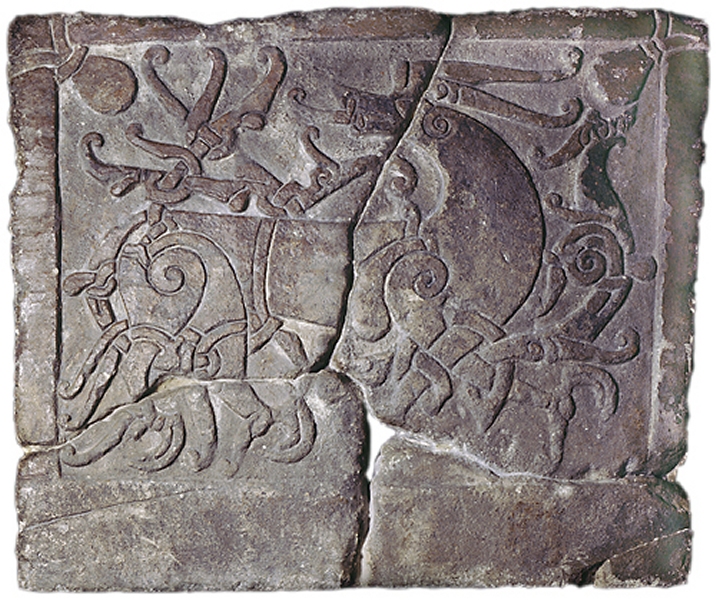About this object
-
ID:
4075
Production date:
Saxo-Norman; early 11th century
-
Location:
In Store
This rectangular slab of limestone (probably Combe Down Oolite from near Bath) is carved in low relief with a stylised lion fighting a serpent, in the style (known as 'Ringerike') that was popular in Scandinavia and England in the 1000s. There are traces of paint. The left-hand edge has a two-line inscription in the runic alphabet used in Scandinavia at this time: ':[k]ina: let: lekia: st | in: þensi: auk: tuki:'. The language is Old Norse, and it means 'Ginna and Toki had this stone laid'. The stone was found just outside St Paul's Cathedral and probably marked the grave of a follower of the Danish king Cnut, who ruled England from 1016 to 1035. It is possible that Ginna was the widow and Toki the son of the dead man, whose name must have appeared elsewhere on the tomb.
-
Measurements
H 472 mm; W 567 mm; D 102 mm; WT 50000 g (overall)
-
Materials
stone; oolitic limestone (Bath stone, Combe Down Oolite)
-
Last Updated
2024-03-14
Record quality:
Not every record in Collections Online is complete. Some have low quality images designed purely for recognition, while some have been catalogued only to a basic standard. This graphic is designed to give you an impression of the quality of data you can see. 100% meets all our current data standards and has a high quality image, 20% is a basic record with no image. Individual record quality can change over time as new photography is carried out and records are worked on.
X









